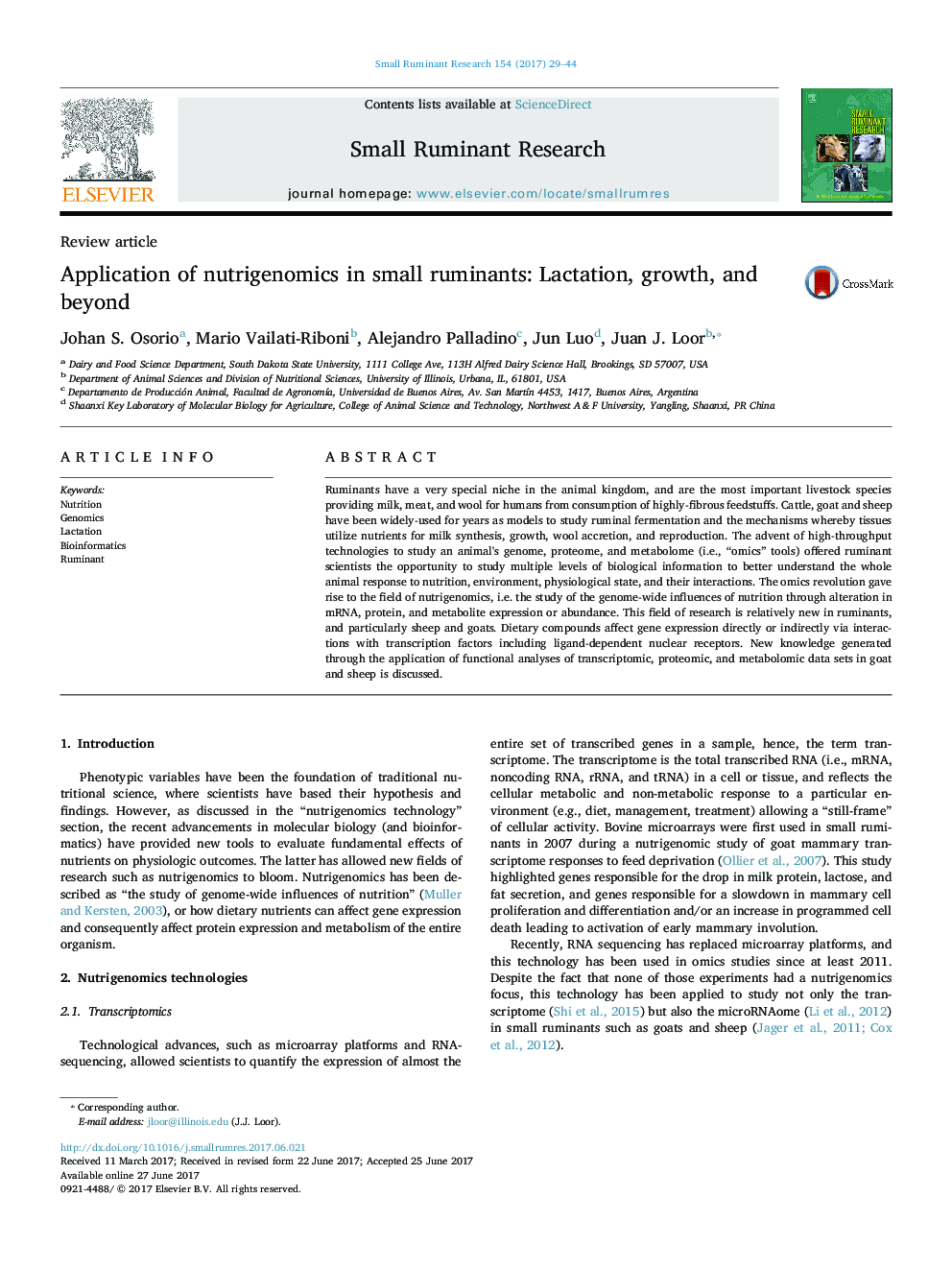| کد مقاله | کد نشریه | سال انتشار | مقاله انگلیسی | نسخه تمام متن |
|---|---|---|---|---|
| 5544212 | 1554338 | 2017 | 16 صفحه PDF | دانلود رایگان |
- High-throughput 'omics' technologies are allowing ruminant scientists to generate large-scale mRNA, protein, and metabolite data.
- Genome-wide changes elicited by nutrition are at the core of nutrigenomics. Omics tools are integral components of the nutrigenomics toolbox.
- Nutrients affect cellular transcription regulators triggering changes in mRNA transcription and often tissue function.
- Nutrigenomics is revealing key biologic responses of goat and sheep to nutrients suggesting applicability in their nutritional management.
Ruminants have a very special niche in the animal kingdom, and are the most important livestock species providing milk, meat, and wool for humans from consumption of highly-fibrous feedstuffs. Cattle, goat and sheep have been widely-used for years as models to study ruminal fermentation and the mechanisms whereby tissues utilize nutrients for milk synthesis, growth, wool accretion, and reproduction. The advent of high-throughput technologies to study an animal's genome, proteome, and metabolome (i.e., “omics” tools) offered ruminant scientists the opportunity to study multiple levels of biological information to better understand the whole animal response to nutrition, environment, physiological state, and their interactions. The omics revolution gave rise to the field of nutrigenomics, i.e. the study of the genome-wide influences of nutrition through alteration in mRNA, protein, and metabolite expression or abundance. This field of research is relatively new in ruminants, and particularly sheep and goats. Dietary compounds affect gene expression directly or indirectly via interactions with transcription factors including ligand-dependent nuclear receptors. New knowledge generated through the application of functional analyses of transcriptomic, proteomic, and metabolomic data sets in goat and sheep is discussed.
Journal: Small Ruminant Research - Volume 154, September 2017, Pages 29-44
